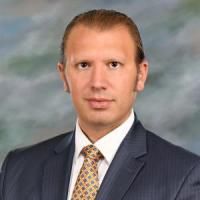Restoring L4-S1 Lordosis Shape in Severe Sagittal Deformity: Impact of Correction Techniques on Alignment and Complication Profile.
Date
2024-06
Journal Title
Journal ISSN
Volume Title
Repository Usage Stats
views
downloads
Citation Stats
Attention Stats
Abstract
Background context
Severe sagittal plane deformity with loss of L4-S1 lordosis is disabling and can be improved through various surgical techniques. However, data is limited on the differing ability of anterior lumbar interbody fusion (ALIF), pedicle subtraction osteotomy (PSO), and transforaminal lumbar interbody fusion (TLIF) to achieve alignment goals in severely malaligned patients.Purpose
To examine surgical techniques aimed at restoring L4-S1 lordosis in severe adult spinal deformity (ASD).Design
Retrospective review of prospectively collected data.Patient sample
A total of 96 patients who underwent ALIF, PSO, and TLIF were included in this study.Outcome measures
The following data were observed for all cases: patient demographics, spinopelvic parameters, complications, and PROMs.Methods
Severe ASD patients with preoperative PI-LL >20°, L4-S1 lordosis <30°, and full body radiographs and patient-reported outcome measures (PROMs) at baseline and six-week postoperative visit were included. Patients were grouped into ALIF (1-2 level ALIF at L4-S1), PSO (L4/L5 PSO), and TLIF (1-2 level TLIF at L4-S1). Comparative analyses were performed on demographics, radiographic spinopelvic parameters, complications, and PROMs.Results
Among the 96 included patients, 40 underwent ALIF, 27 underwent PSO, and 29 underwent TLIF. At baseline, cohorts had comparable age, sex, race, Edmonton frailty scores and radiographic spinopelvic parameters (p>0.05). However, PSO was performed more often in revision cases (p<0.001). Following surgery, L4-S1 lordosis correction (p=0.001) was comparable among ALIF and PSO patients and caudal lordotic apex migration (p=0.044) was highest among ALIF patients. PSO patients had higher intraoperative estimated blood loss (p<0.001) and motor deficits (p=0.049), and in-hospital ICU admission (p=0.022) and blood products given (p=0.004) but were otherwise comparable in terms of length of stay, blood transfusion given, and postoperative admission to rehab. Likewise, 90-day postoperative complication profiles and six-week PROMs were comparable as well.Conclusions
ALIF can restore L4-S1 sagittal alignment as powerfully as PSO, with fewer intra-operative and in-hospital complications. When feasible, ALIF is a suitable alternative to PSO and likely superior to TLIF for correcting L4-S1 lordosis among patients with severe sagittal malalignment.Type
Department
Description
Provenance
Subjects
Citation
Permalink
Published Version (Please cite this version)
Publication Info
Singh, Manjot, Mariah Balmaceno-Criss, Mohammad Daher, Renaud Lafage, D Kojo Hamilton, Justin S Smith, Robert K Eastlack, Richard G Fessler, et al. (2024). Restoring L4-S1 Lordosis Shape in Severe Sagittal Deformity: Impact of Correction Techniques on Alignment and Complication Profile. World neurosurgery. p. S1878-8750(24)00968-9. 10.1016/j.wneu.2024.06.021 Retrieved from https://hdl.handle.net/10161/31200.
This is constructed from limited available data and may be imprecise. To cite this article, please review & use the official citation provided by the journal.
Collections
Scholars@Duke

Peter Passias
Throughout my medical career, I have remained dedicated to improving my patients' quality of life. As a specialist in adult cervical and spinal deformity surgery, I understand the significant impact our interventions have on individuals suffering from debilitating pain and physical and mental health challenges. Spinal deformity surgery merges the complexities of spinal biomechanics with the needs of an aging population. My research focuses on spinal alignment, biomechanics, innovative surgical techniques, and health economics to ensure value-based care that enhances patient outcomes.

Christopher Ignatius Shaffrey
I have more than 25 years of experience treating patients of all ages with spinal disorders. I have had an interest in the management of spinal disorders since starting my medical education. I performed residencies in both orthopaedic surgery and neurosurgery to gain a comprehensive understanding of the entire range of spinal disorders. My goal has been to find innovative ways to manage the range of spinal conditions, straightforward to complex. I have a focus on managing patients with complex spinal disorders. My patient evaluation and management philosophy is to provide engaged, compassionate care that focuses on providing the simplest and least aggressive treatment option for a particular condition. In many cases, non-operative treatment options exist to improve a patient’s symptoms. I have been actively engaged in clinical research to find the best ways to manage spinal disorders in order to achieve better results with fewer complications.
Unless otherwise indicated, scholarly articles published by Duke faculty members are made available here with a CC-BY-NC (Creative Commons Attribution Non-Commercial) license, as enabled by the Duke Open Access Policy. If you wish to use the materials in ways not already permitted under CC-BY-NC, please consult the copyright owner. Other materials are made available here through the author’s grant of a non-exclusive license to make their work openly accessible.
